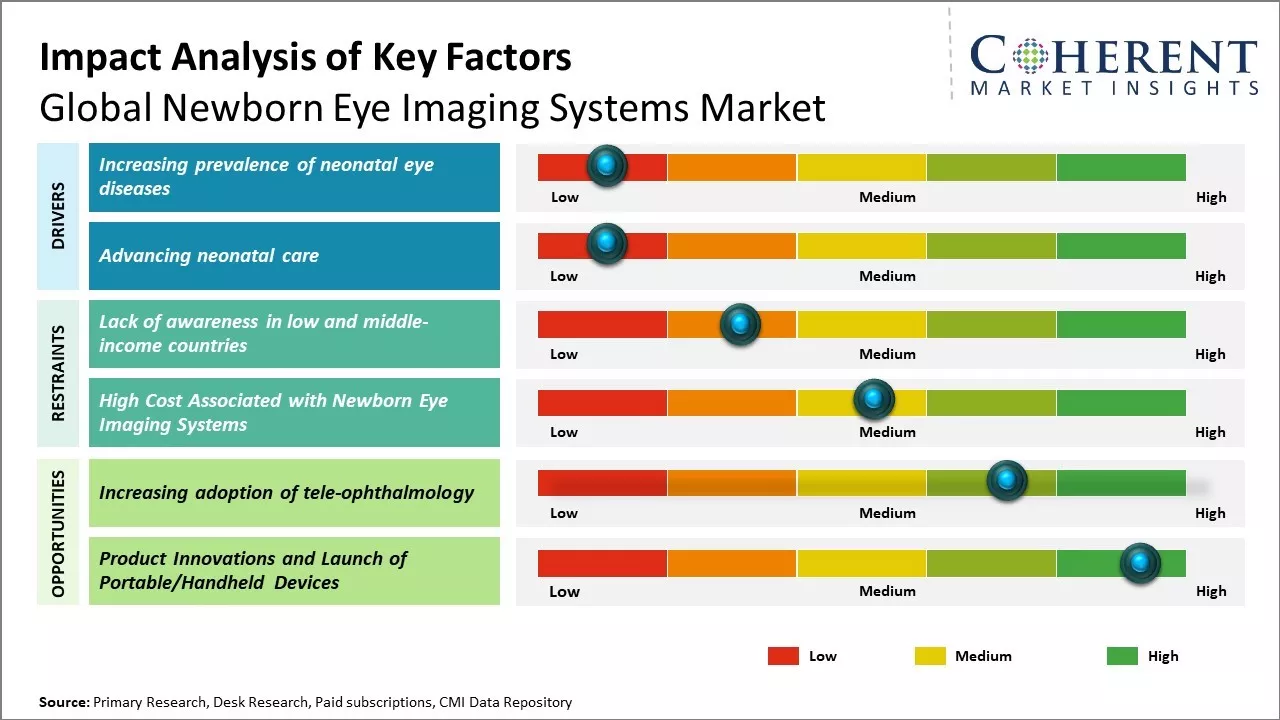Global newborn eye imaging systems market is estimated to be valued at USD 284.2 Mn in 2025 and is expected to reach USD 405.5 Mn by 2032, exhibiting a compound annual growth rate (CAGR) of 5% from 2025 to 2032.

To learn more about this report, Request sample copy
Newborn eye screening is becoming standard practice in many parts of the world due to rising awareness about sight threatening conditions. This boosts demand for newborn eye imaging systems from hospitals and eye care centers.
Increasing prevalence of neonatal eye diseases
Rising prevalence of various eye diseases among newborns can drive the market growth. In 2020, according to the report published by World Health Organization, more than 1 million newborns worldwide suffer from treatable eye problems every year. The occurrence of retinopathy of prematurity (ROP), which affects premature infants, has doubled in the last two decades due to increasing number of preterm births and improvements in neonatal care. ROP screening is now recommended for all infants born before 30 weeks of gestation or weighing less than or equal to 1500 grams. Moreover, other congenital ocular disorders like cataract, glaucoma and corneal infections can also cause childhood blindness. This rising incidence of neonatal eye diseases has boosted the need for widespread and timely screening of newborns using non-invasive imaging technologies. Newborn eye imaging systems allow early diagnosis of these vulnerable eye conditions, which if left untreated, can cause severe vision impairment or total blindness. These systems offer distinct advantages over manual screening methods as these allow examination of the retina without any risk of infection or additional stress to the fragile newborn. Several specialty hospitals and NICUs are incorporating newborn eye imaging systems as part of their routine screening protocols to reduce the risk of vision loss in children. For Instance, In December 2023, according to the study published by the American Journal of Pathology, granulocyte colony-stimulating factor (G-CSF) plays a significant role in neonatal diseases like bronchopulmonary dysplasia (BPD) and retinopathy of prematurity (ROP). These conditions affect premature infants, with BPD causing lifelong lung damage and ROP leading to irreversible vision impairment. The study found that G-CSF levels were elevated in both mouse models and preterm infants with severe BPD, implicating it in the pathogenesis of these diseases. Mice deficient in G-CSF showed reduced lung damage and protected against retinopathy, suggesting G-CSF as a potential therapeutic target to improve outcomes for premature infants suffering from these conditions.
Joining thousands of companies around the world committed to making the Excellent Business Solutions.
View All Our Clients